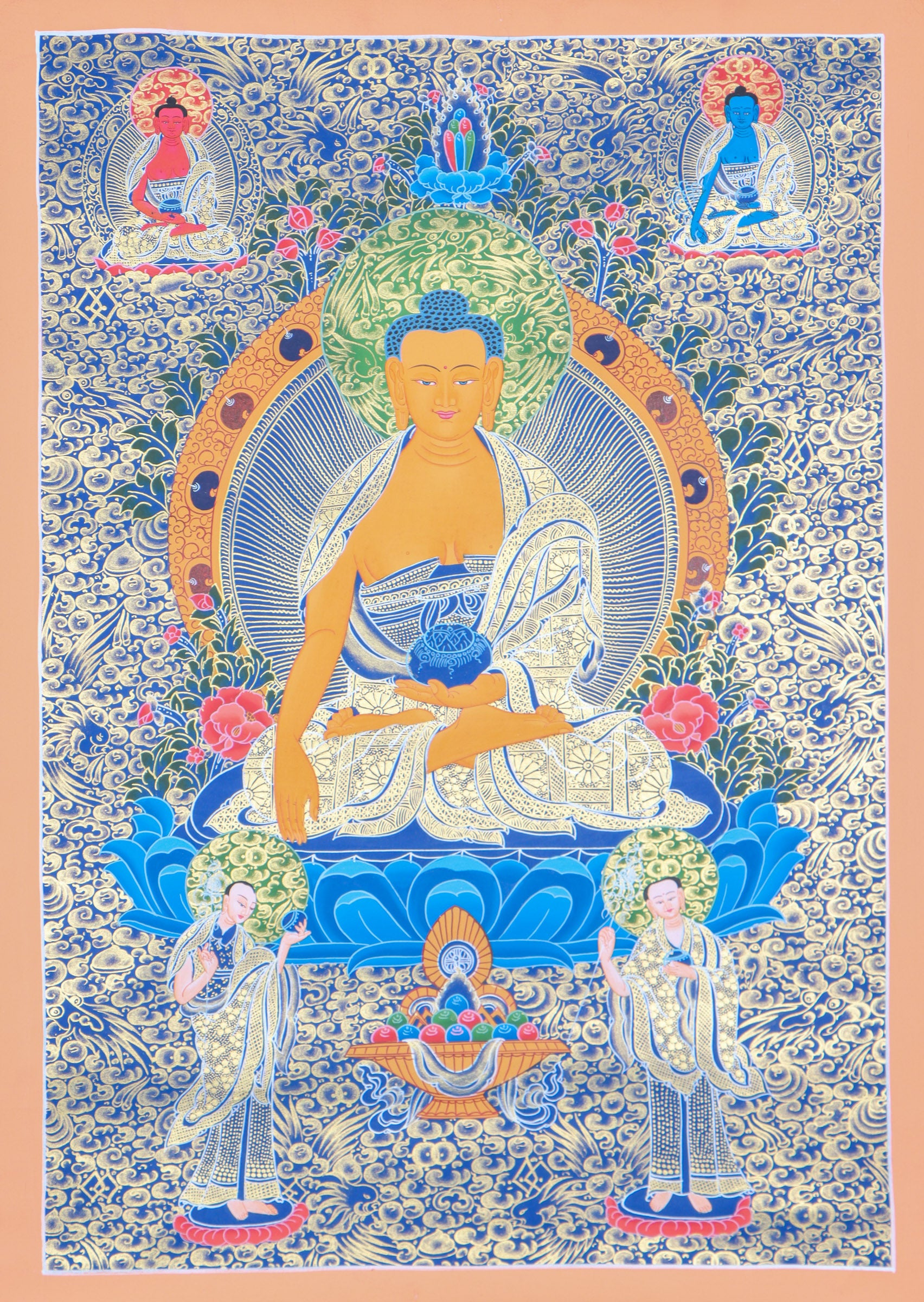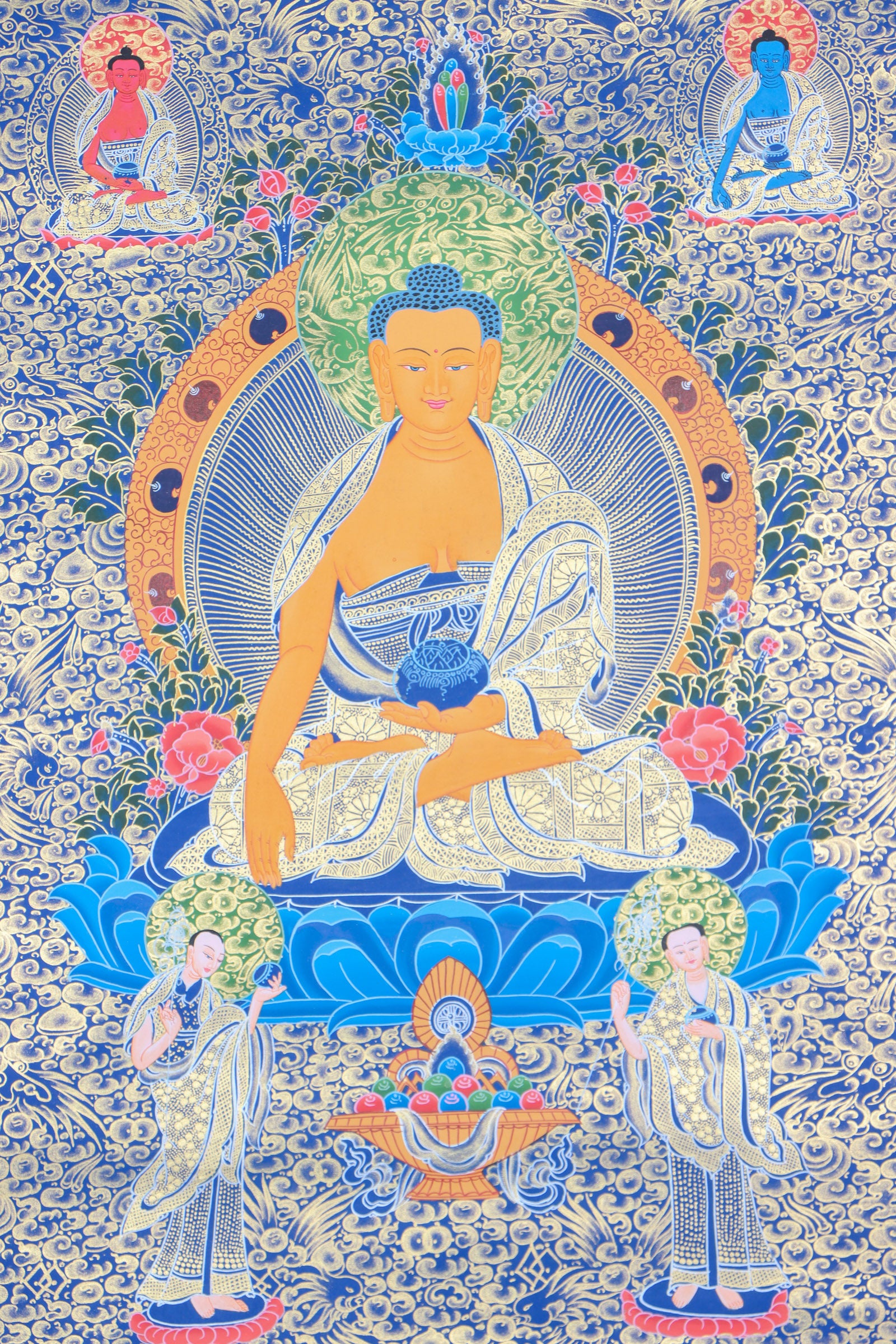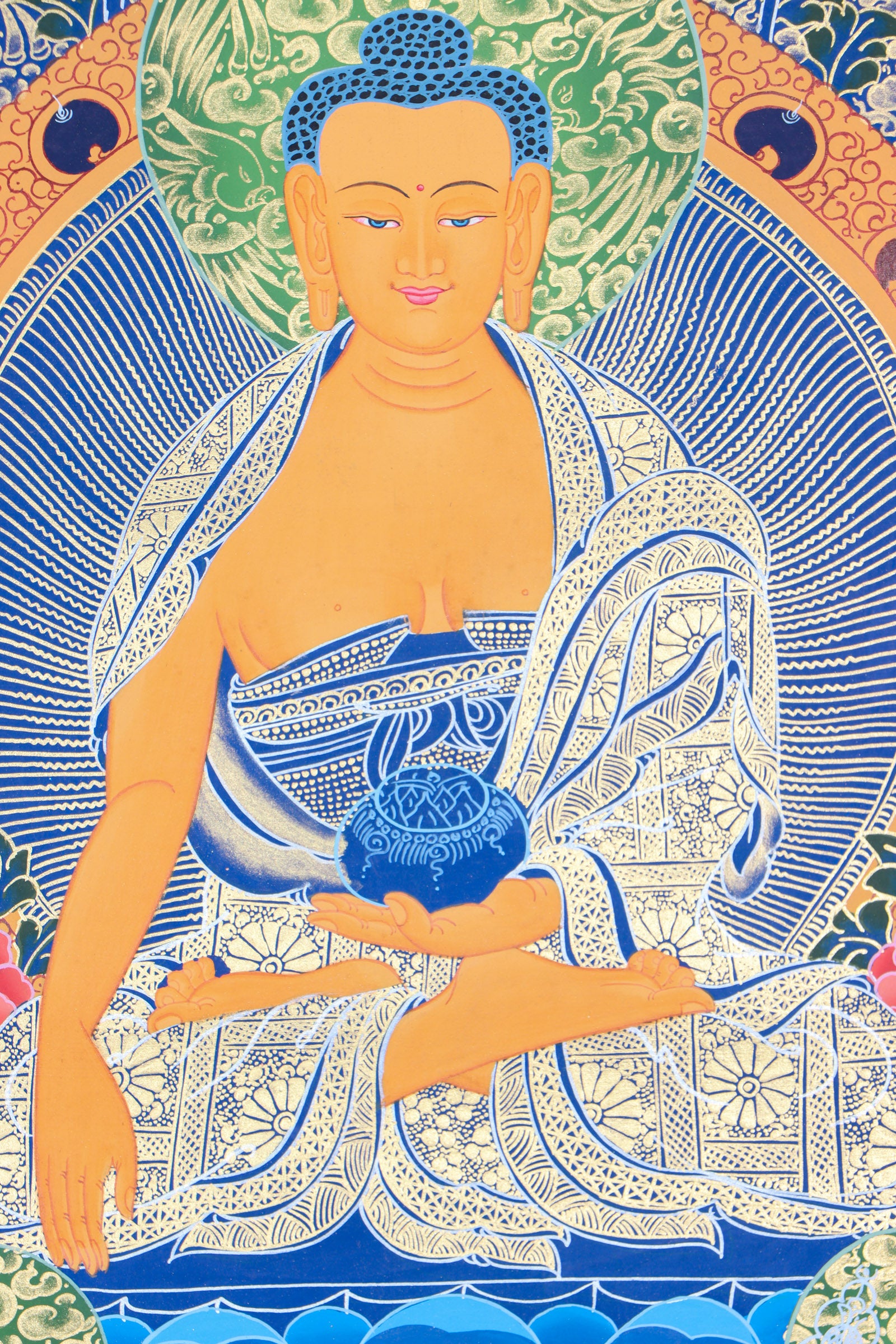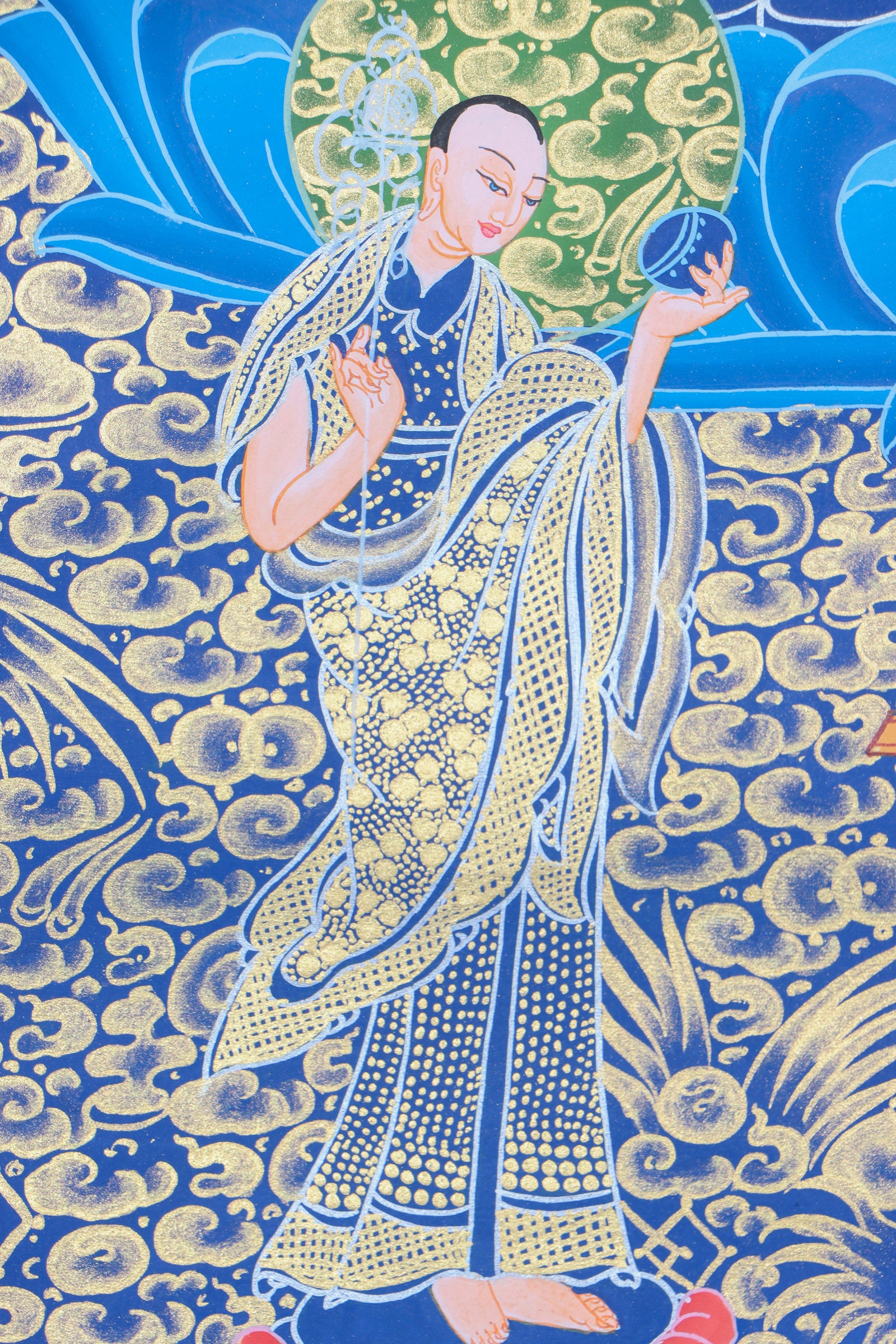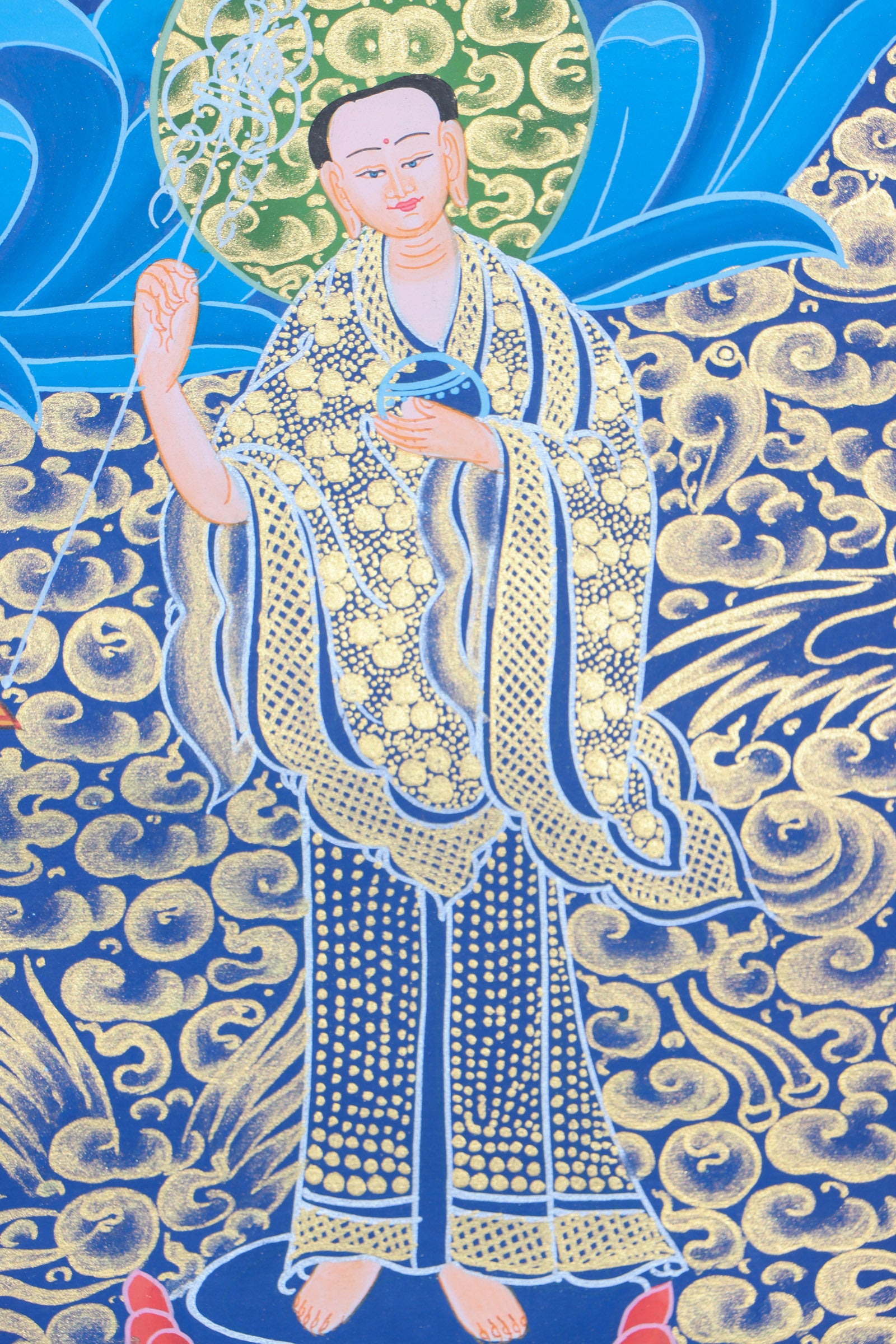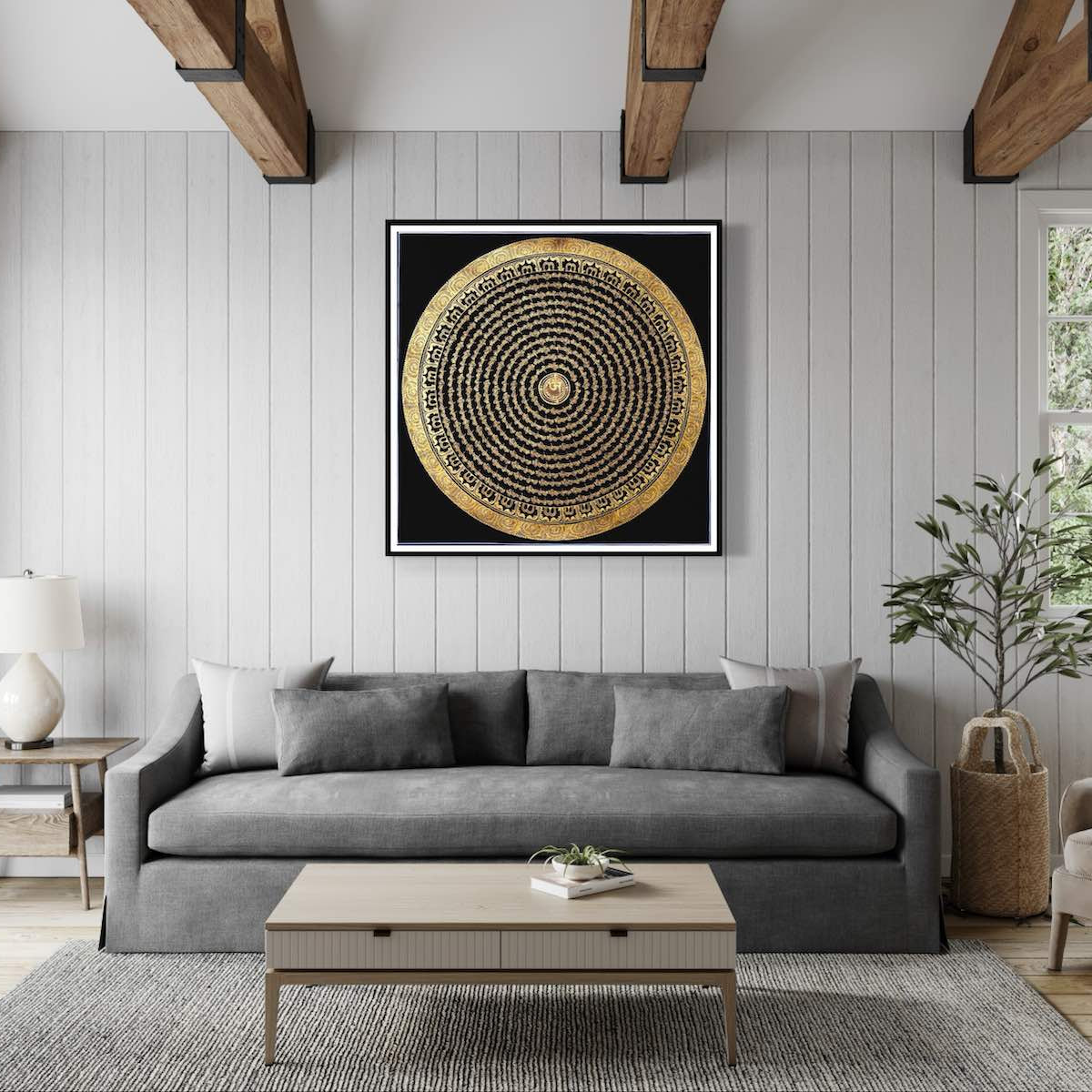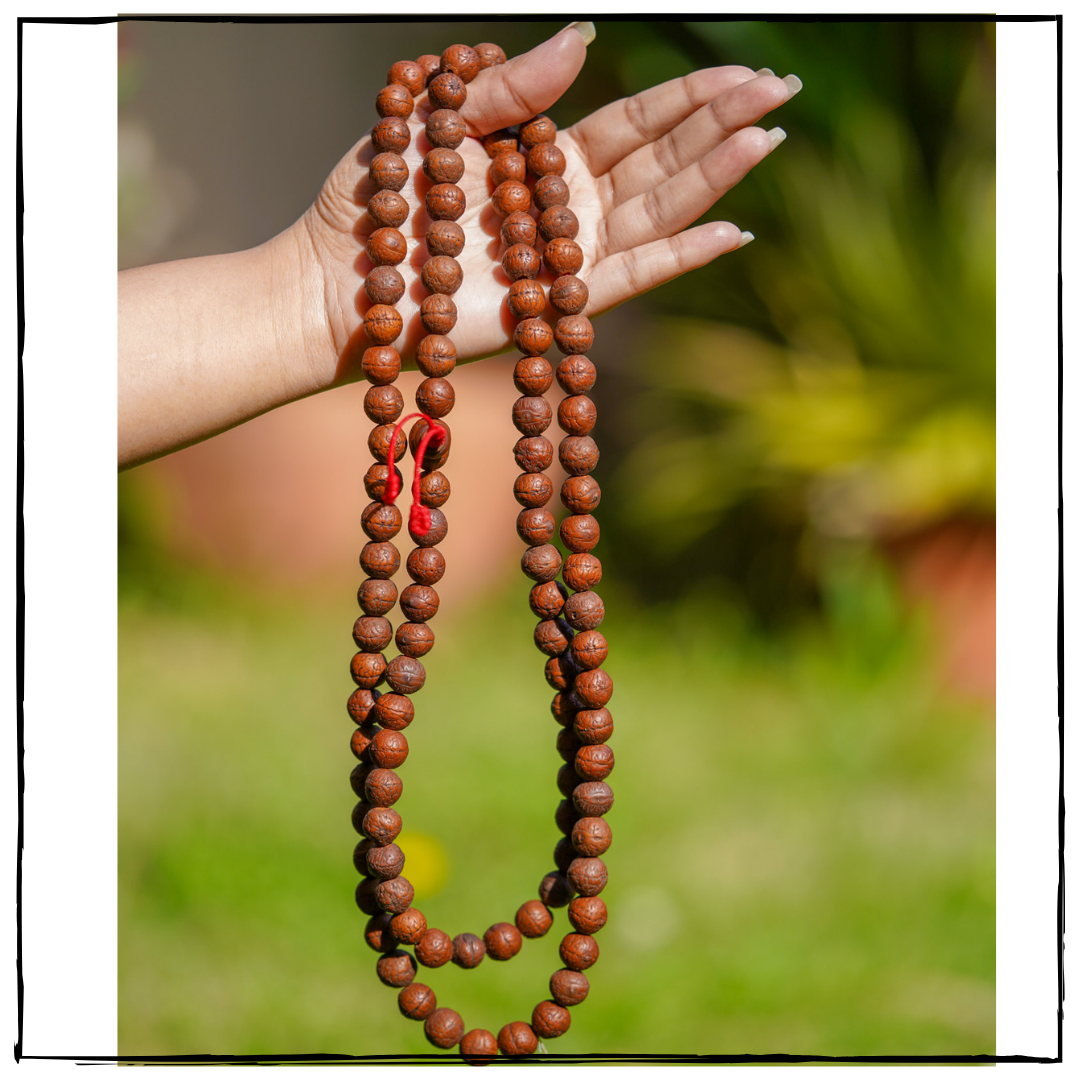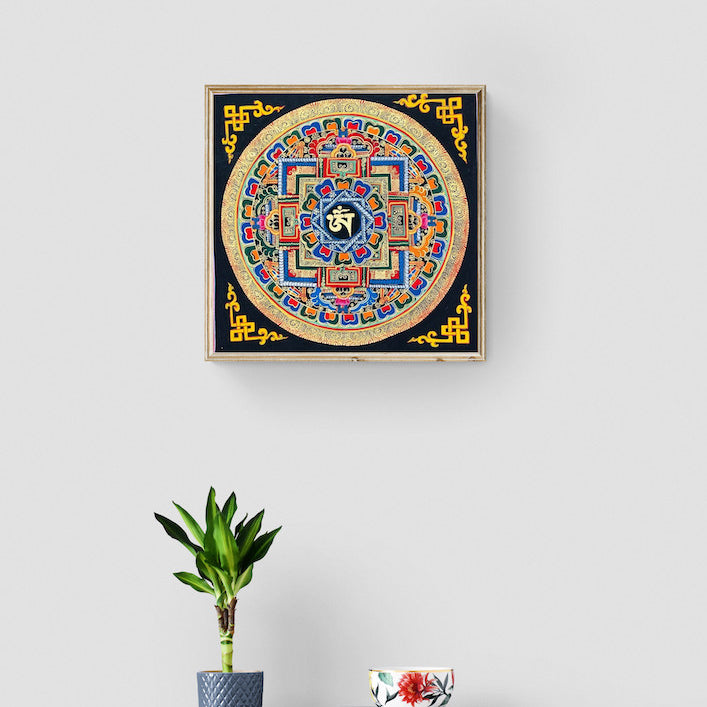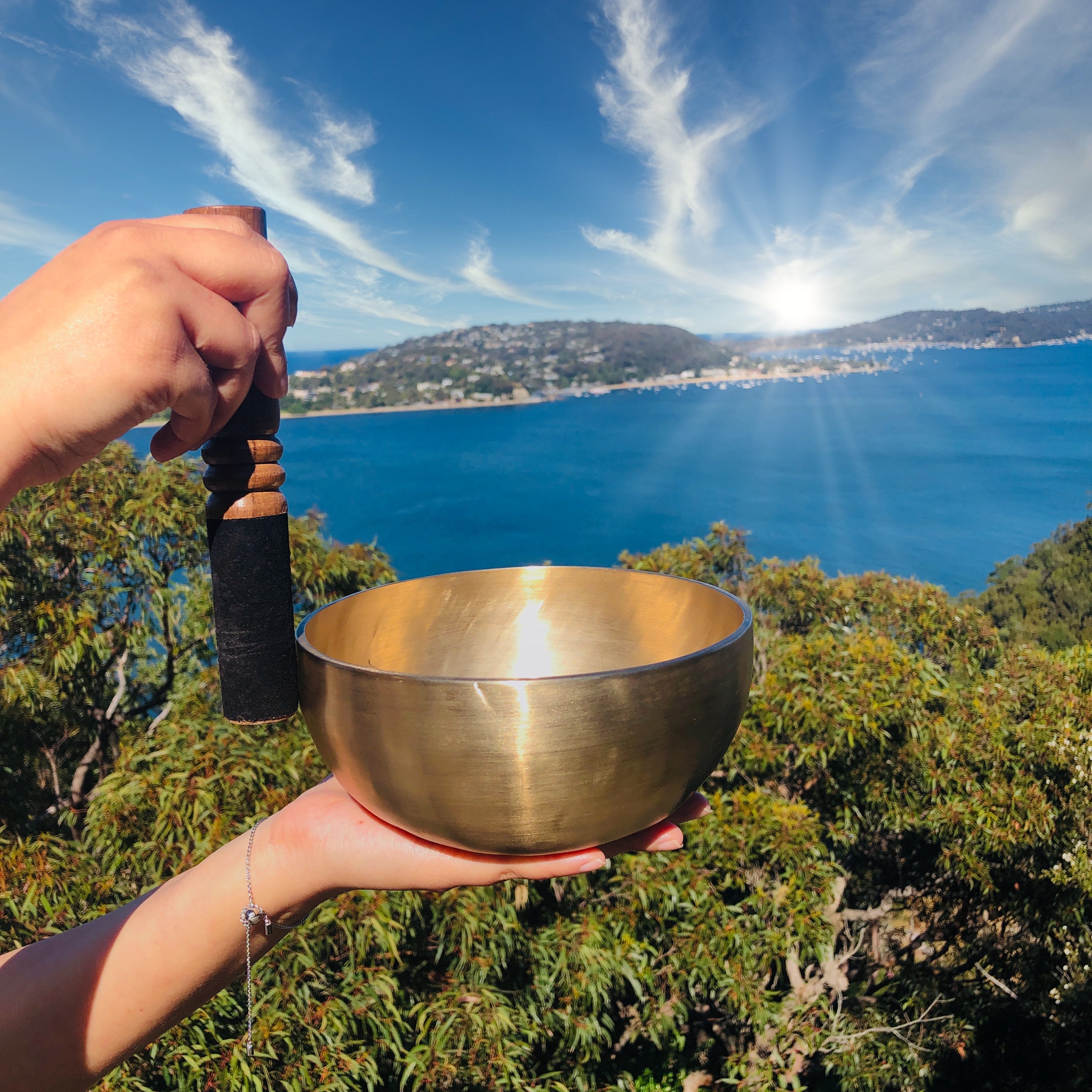Shakyamuni Buddha Thangka Painting
Couldn't load pickup availability
Description
Shakyamuni Buddha Thangka Painting is a classic Tibetan art form which portrays the Historical Buddha, Siddhartha Gautama, also referred to as Shakyamuni. These elaborate renditions are utilized for meditation and worship in the Tibetan Buddhist tradition.
Shakyamuni Buddha is depicted in the center of Thangka painting. His posture, known as the "Dharmachakra Mudra," presents him as being seated in meditation with his right hand pressed against the earth in an invocation of the evidence of his enlightenment. This Shakyamuni Buddha Thangka accurately displays the Buddha's hands, which each assume a different position - each one signifying a unique aspect of his teachings and indicating particular qualities.
Shakyamuni Buddha Thangka Paintings are much more than decorative artwork. Regarded as sacred, they are used for meditative practices and reflecting. They can be found in Buddhist temples, houses, and monasteries. In Tibetan Buddhist culture, these paintings are prized for their spiritual meaning and aesthetic quality, making them an important part of Buddhist customs. This painting has been carefully hand-painted, offering an intricate and detailed visual representation of the enlightened one. The colors are vivid and natural, making the finished piece radiant and aesthetically pleasing.
Product Specification:
- Hand Painted
- Materials: Semi-Precious Natural Minerals
- Base: Cotton Canvas
- Origination: Nepal

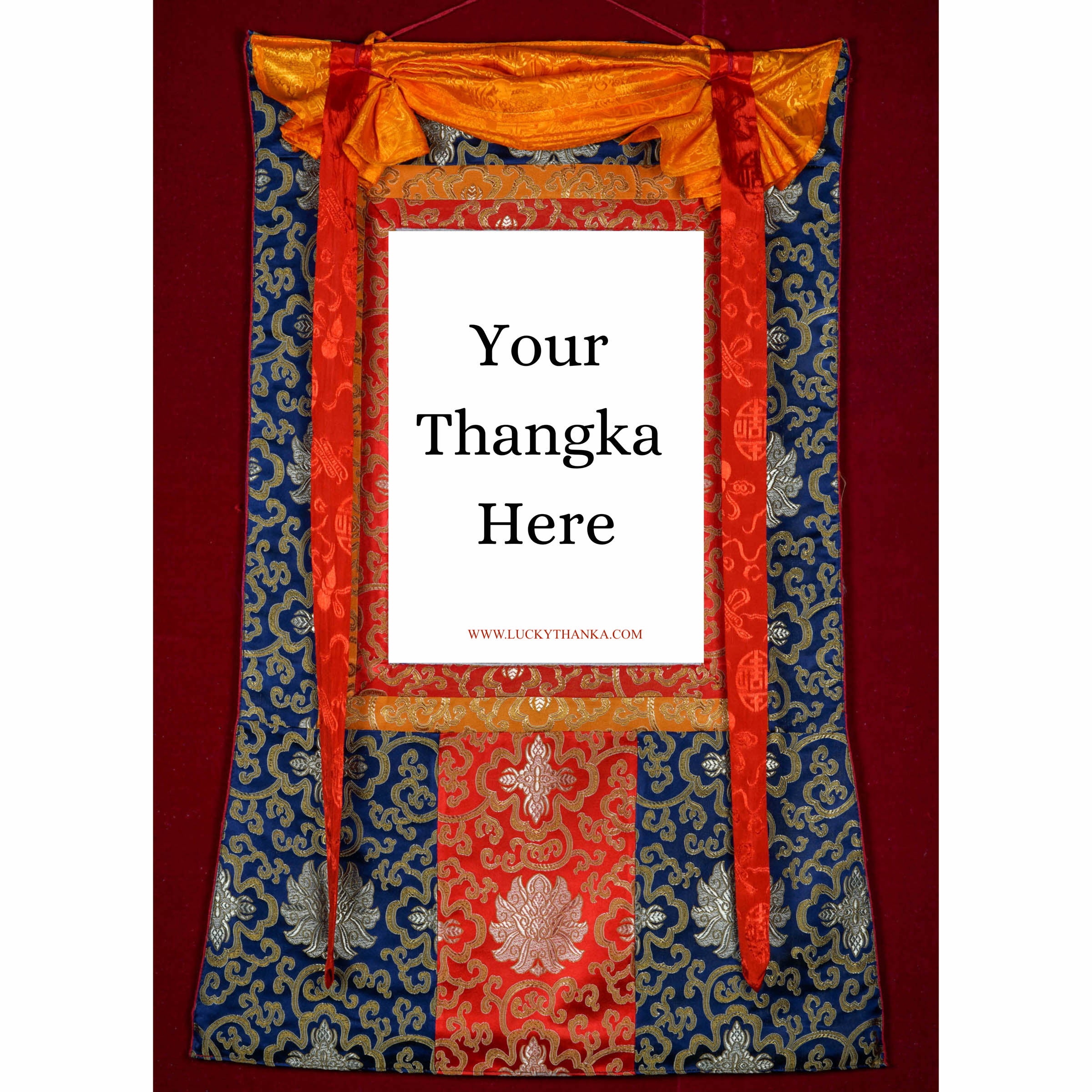
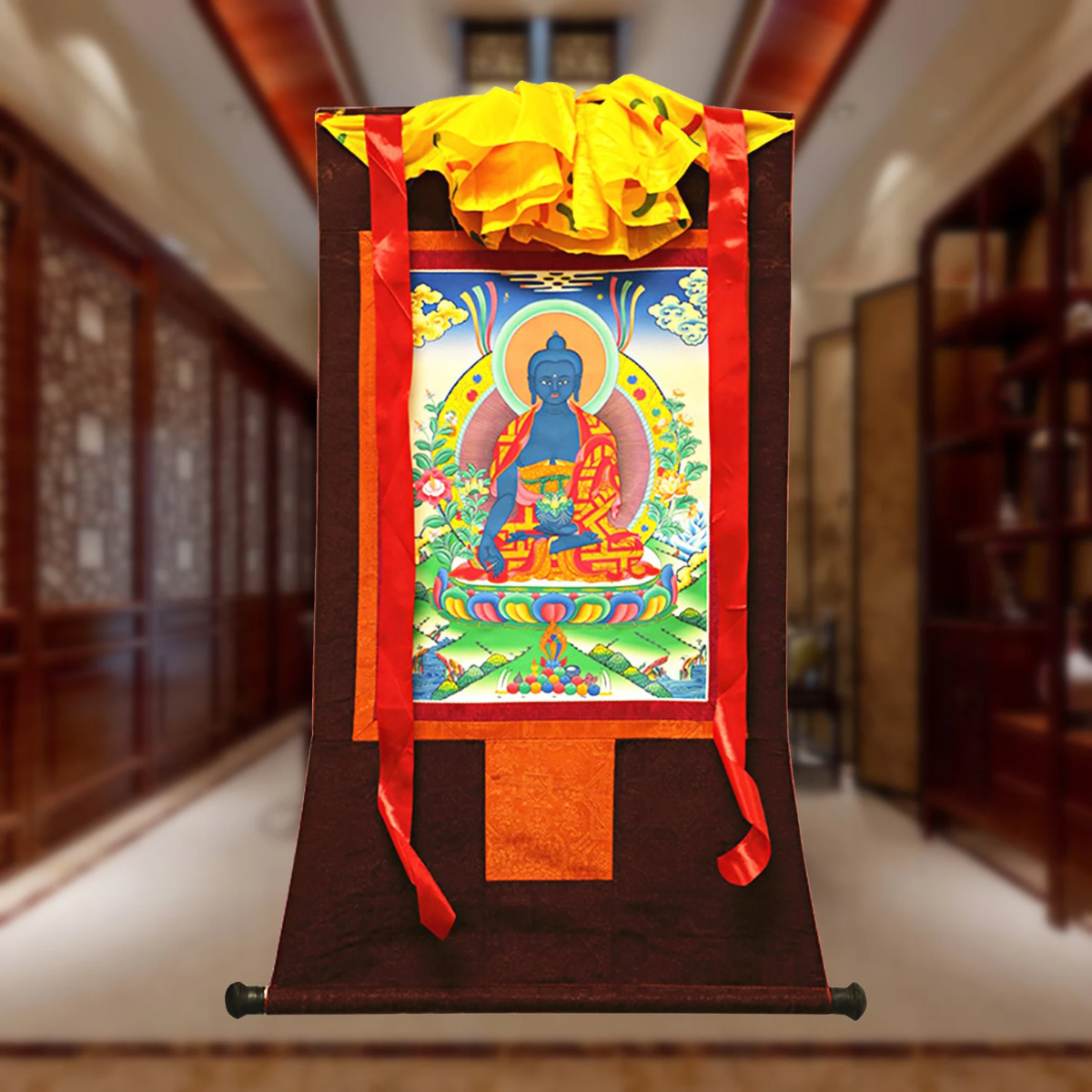
Hand Embroidery Brocade
Want to add a Brocade to your beautiful Thangka Painting? Traditional Style Brocade has been one of the most popular form of mounting as it has a greater religious merit.
Note: Make sure you have added the Thangka to your cart first.
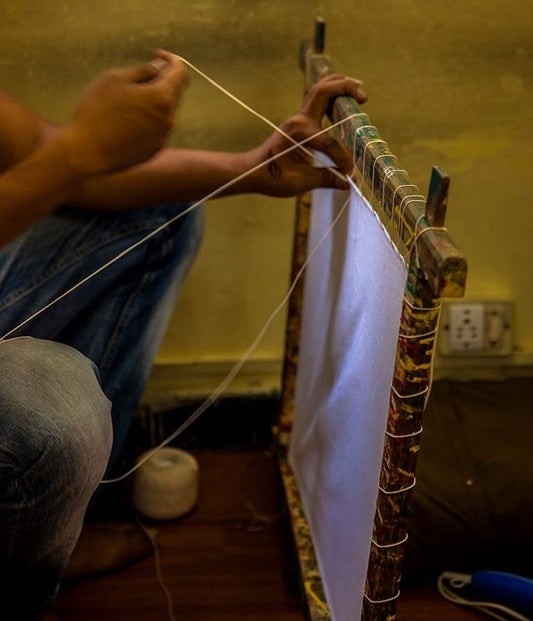
100% Cotton Canvas
Preparing the Cotton canvas before starting to paint a Thangka. This process includes washing, drying, stretching, sizing and everything needed to make a perfect base for the thangka to last for centuries.
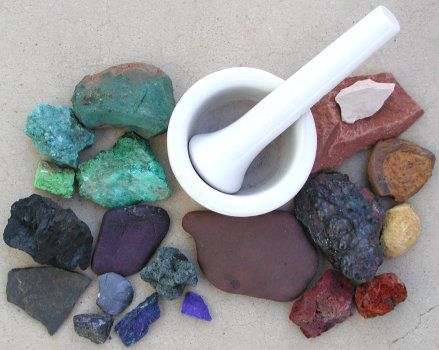
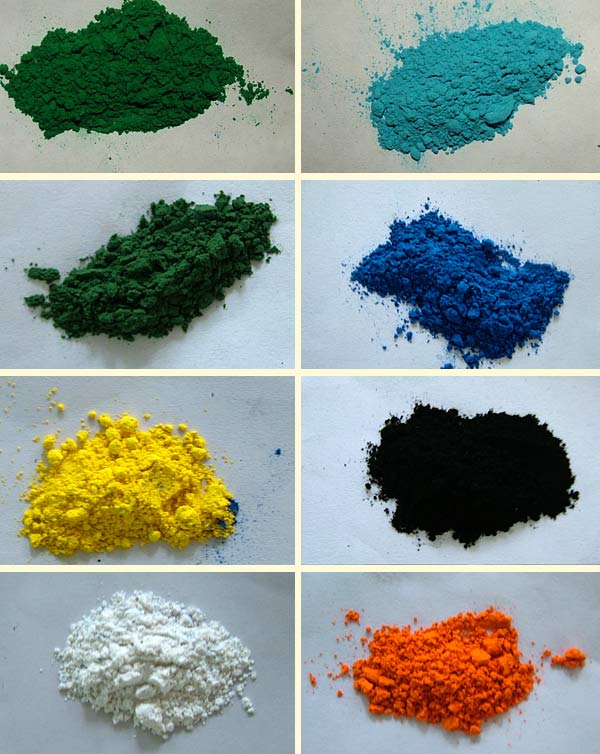
Natural Minerals
Thangka Paintings are painted using the natural minerals. These are firstly grind into the powder form and then used in the thangka as a paint.



